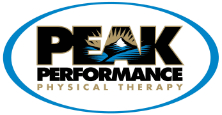Fractures of the fingers that don't involve the joint are called extraarticular phalangeal fractures. The term phalanges refers to the finger bones. Of the three bones in each of the fingers, the phalanges closest to the hand is the proximal phalange. Extraarticular fractures of the proximal phalanges are the topic of this article.
Treatment for nondisplaced phalangeal fractures is usually with cast immobilization. The cast places the large knuckles (metacarpal phalangeal joints) in a bent position to tighten the tendons and protect the healing fractures. Because it is a forearm cast (goes from hand to just below the elbow), the patient's wrist is also immobilized. The result is a stiff wrist when the fracture(s) are finally healed.
To accomplish the same fracture stabilization without involving the wrist, a special cast called the Lucerne cast or LuCa for short was devised. This cast still holds the large knuckles in a bent position but now the wrist is free to move. The LuCa just covers the hand and stops below the wrist.
In this study, surgeons from four different hospitals in Switzerland compared the use of the standard forearm cast with the LuCa on 66 patients. In this patient group, one to three fingers on one hand were fractured (little finger fractured most often). Patients ranged in age from 16 to 93 years old and fractured the finger(s) in sports injuries or falls.
The patients were randomly assigned to one of the two treatment groups. All patients were instructed to move the fingers as far as the cast would allow (full flexion, partial extension) during the four weeks of immobilization. Fractured fingers were taped to the uninjured finger next to it or to fingers on both sides if possible. A special tubular finger bandage was used.
Results were measured and compared with X-rays and range-of-motion measurements of the fingers and wrist. Follow-up was for at least three months. Patients were also given the opportunity to rate their satisfaction with the results on a scale from zero (dissatisfied) to 10 (completely satisfied).
The authors report that everyone had equal results when viewed at the end of the three month follow-up. The only difference was better wrist motion in the LuCa group when the cast first came off. About one third of the group was referred to a hand therapist for various reasons. With or without hand therapy, everyone else caught up by the end of the follow-up period. The conclusion is that for well-reduced finger fractures affecting the proximal phalanges, a modified cast that does not include the wrist can be used.
A couple of events occurred during the study that should be noted. First, about one-third of the total group was referred to a hand therapist. This was done at the discretion of the surgeon. Referral was not based on any specific criteria consistently applied to each patient.
Second, three patients treated with the LuCa ended up having surgery within the first two weeks when X-rays showed the fracture reduction wasn't holding. And third, two of the patients in the forearm cast group developed a condition known as complex regional pain syndrome or CRPS. Loss of wrist motion may have contributed to that complication, possibly supporting the LuCa as the better option.
In summary, it is possible to treat extraarticular fractures of the proximal phalangeal (finger bones) conservatively without surgery. Nonoperative care with cast immobilization allows free wrist motion and good results. The advantage of being able to use the wrist increases patient satisfaction and may prevent some other complications. There is a risk that the fracture site may separate and thus require surgery but whether that happened in this study because of the LuCa or for some other reasons remains unknown.
Reference: T. Franz, MD, et al. Extra-Articular Fractures of the Proximal Phalanges of the Fingers: A Comparison of 2 Methods of Functional, Conservative Treatment. In The Journal of Hand Surgery. May 2012. Vol. 37A. No. 5. Pp. 889-898.
